
Another poll, another Interactive Fantasies title. Not that anybody can be blamed for that. There's good reason that IF's titles get such prominent coverage. You know what to expect by now: high production releases by big names which tend to result in games which, if they aren't excellent in terms of quality, at least wind up being worth looking at for their charm and style. Today we're taking a look at King's Quest ZZT, an old favorite of mine that hits a lot of familiar beats found throughout the history of IF. Like the previously covered Death Gate, this is both part-original tale and part-re-imagining of existing works. This time the subject matter is that of Sierra's King's Quest series, the best-selling adventures throughout the 80s and 90s. In addition King's Quest ZZT gives us another joint venture by Hydra and MeBo, the co-conspirators who would go on to team up again to create Freak Da Cat 2 at the end of the milennium.
The good news though, is that unlike Death Gate, King's Quest ZZT is significantly more grounded to its source material. The better news is that it's not so rooted in its Sierra adventure game inspirations that it becomes frustrating to a modern audience. Unfortunately, I personally lack the credentials to really speak too confidently about Sierra's King's Quest games, only learning what I know of them from the decades after-the-fact discussions comparing the Sierra design to Lucas Arts, and the endless debate on if they're actually good or were just from an era where making the player (often unknowingly) be unable to progress was considered value for your money. I'm more of a Hugo's House of Horrors guy I suppose.
Honestly, what colors my perception of both the actual titles and this fanwork the most these days are the old retsupurae* videos riffing over longplays of King's Quest VI: Heir Today, Gone Tomorrow and King's Quest V: Absence Makes the Heart Go Yonder!. (Recorded in that order.) So, on the one hand I very much have a hard time taking these old games seriously, but can't deny that I completely see the appeal of playing them, especially in their time. The real trouble with these games only seems to occur if you actually intend on completing these games.
* (As a heads up, a lot of this channel's older uploads are... not great to watch today. In z2's worse days there was an adage that the ZZT community had turned into a group of people who couldn't afford to buy Something Awful forums accounts. The earliest stuff on that channel is very much of that era. I re-watched the King's Quest videos in 2020, recently enough to remember them as being from a more chill later era, but I can't vouch that there won't be at least one out of place remark in those videos.)
It's easy to become enamored with the fairy-tale fantasy worlds portrayed in these games, and wanting to explore the worlds more than the game lets you, whether that be by its actual limited-in-size worlds, or by "I cannot figure out how to get past this bridge troll". I've said it before that medieval fantasy is one of the most natural fits for ZZT games whose default mechanics and elements complement the genre quite nicely. Arm the player with a bow, call lions "orcs", cross streams of water, navigate forests of... forests, and grab some torches as you venture into a mountain cave. Not only is the genre very approachable for beginners with ZZT, but as an author becomes more experienced they can continue to work with the genre, enhancing their game with more complex systems like turn-based RPG combat, melee focused sword combat with objects, and telling more complex stories that aim to be the ZZT equivalent of Lord of the Rings.
For Hydra and MeBo this is a pretty early title. Like most Interactive Fantasies games, a catalog of software is accessible from the game's main menu. In this case the company has just seven releases listed, which includes a Fireball Engine for MegaZeux and King's Quest ZZT itself in that short list. This is early IF and thus comes with all the rougher bits you'd expect: The English is slightly off in places, the graphics are adequate though pale before their later releases, and of course the story is kind of wild.
Still, I said it was a favorite of mine for a reason. I had never heard of the King's Quest series as a child so it would be years before I realized this game was based on anything (despite several instances of the game explicitly citing other King's Quest games). Where it won me over then, as it does now, is in how well it creates a world that's just so much fun to explore. I complained that Death Gate felt like going on a conflict-free walk while its story purported some very high stakes. KQZZT takes the player on a tour of exotic locales with just enough danger that it still feels like a proper adventure. I'm looking forward to sharing this one with everybody.
Read The Fantasy Manual

This is how you instantly make me fall in love with a ZZT game.
King's Quest ZZT opens up on a main menu which includes a passage to a two board "information screen", which is basically its instruction manual. Like many who grew up in a time when video games came with manuals, I have fond memories of getting a new video game and flipping through the manual on the way back home. ZZT games that offer an equivalent always win points in my book. I can't not look at this without wanting to know what all this cool stuff I'm going to come across on my adventure is. Forget Chekhov's gun, at the start of the play have a dude walk on stage and show off all the neat props the audience is going to see.
The first board deals with the various creatures you'll come across. Each one has a little description and list of traits covering their size, what colors they'll be seen in, and what parts of the game world you might encounter them. Humans, elves, gnomes, halflings, centaurs, ogres, and sprites make up the sapient races the player will meet. These races stick to the basic fantasy stereotypes, so halflings are known thieves and ogres are "evil barbarians". This isn't a particularly nuanced game, expect that any evil characters are evil for the sake of it. The characters are also typically limited in number enough that you won't run into any situations of "Should I trust the halfling?" or anything like that.
The lower row of creatures are just thematically-skinned ZZT creatures. The effort is appreciated in turning them into something more tuned to the game's setting rather than just relying on ZZTer's prior knowledge of lions, tigers, bears, centipedes, and ruffians. Hydra and MeBo give them a little more detail turning them into forest lions, cave lions, cave bears, cave tigers, giant centipedes, and giant scorpions.
By default ZZT only lets lions be red, so while you could always adjust their intelligence, prior to the mainstream adoption of STK, the only way to tell them apart would be from observation. Using different colors in this way is a nice trick to turn one enemy into two, and a player can theoretically learn to tell which lion color is the aggressive one.
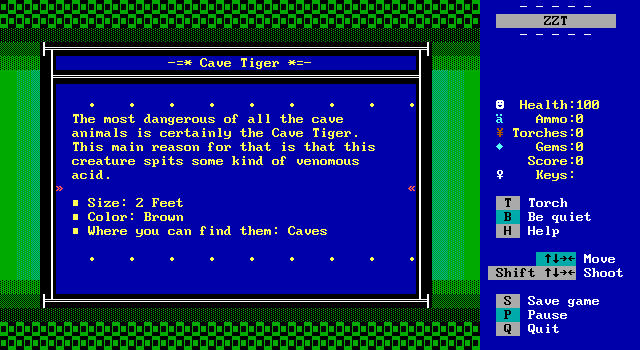
I'm also always going to love ZZT games that try to explain ZZT's own lore. Why can tigers shoot bullets? Well, here in Daventry it's because they're cave tigers that spit "venomous acid". Sounds reasonable.
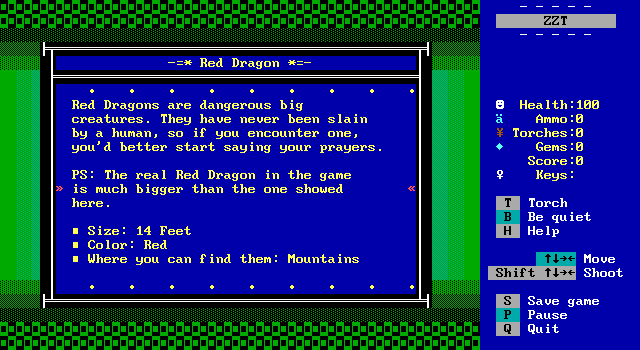
I also appreciate that the authors included the dragon on this board using the traditional ZZT dragon character. The actual dragon is too big to fit on this tiny screen, making me anticipate that we might be dealing with a dragon fight along the lines of the one seen in Ned The Knight.

The second board covers various items found throughout the game is probably one of the best examples of "readable" ASCII you could hope for. Seriously, you don't need descriptions for potentially the entire top row of items, every single one is made clear benefiting greatly from the context of the other items surrounding them to give better context. A sword, a mace, a battle axe, a gold coin, a quiver of arrows, a bow, and a torch line the top row. That's quite a lot of weaponry for a King's Quest game to my knowledge. Heck that's a lot of weapons for a ZZT game.
Along the bottom the readability can't last. A healing potion starting the list is guessable, sure, but it's followed by a golden candlestick, Icarus wings, and a silver medallion. Not that the lack of readability is a detriment. ASCII is pretty limited in that regard, it's just more surprising that the first set of items is so unambiguous that it becomes impressive. Even if you can't tell what the latter half of the game's items are without looking at the descriptions, that's part of the charm of ZZT. There's excitement when you've got a strange object to touch and figure out what it represents versus your own assumption.
Needless to say, showing the player all this stuff up front is a great way to get them invested in the game. I want to fly with Icarus wings, befriend a centaur, and bludgeon an unabashedly evil ogre with a mace. The manual turns one surprise into two as the player learns of these things, but now can only imagine how they'll come into play. Time will tell if what the mind can conjure compares to what Hydra and MeBo actually put together.
RPG Battles
King's Quest ZZT's most novel feature is its inclusion of an RPG battle system. These days, ZZT RPG combat feels more like a chore than anything else most of the time, with the number of exceptions being comfortably countable on just one hand. In the later 90s and early 2000s, they were seemingly everywhere, especially with the pivot from being a niche genre for enthusiasts to becoming a mainstream staple after the explosive success of games like Final Fantasy VII. From a technical standpoint they're almost always of interest, seeing what a given author prioritized or had to strip to fit into ZZT's limitations. The gameplay tends to take a backseat to the shininess of seeing such an engine in ZZT, and King's Quest ZZT is no exception. In the days of a bustling community, coding skills could be enough on their own to impress even if the game an engine was attached to fell flat.
Still, it does do things differently enough that I can't easily compare it to any other ZZT RPG engine.
One thing that I tremendously appreciate is that the main menu lets you do a practice fight against a foe that can't strike back, letting the player know what to expect without putting their lives on the line.
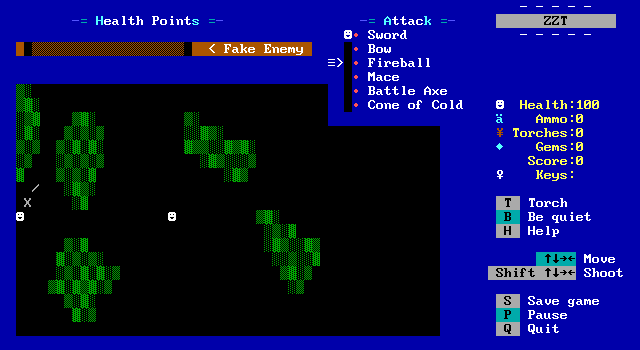
The practice fight is a great introduction as it gives the player full access to every item in the game, allowing them to see how everything behaves. Prior to the training battle beginning, a message pops up explaining how fights in the game will have enemies that fight back. It also specifically mentions that the combat is "turn based", something to keep in mind because it's a bit misleading in practice.
The player will over time gain access to four weapons and two spells. All of the weapons were seen in the manual earlier, but the inclusion of "Fireball" and "Cone of Cold" spells add a magic component to the game as well. Each attack plays out a little animation and then the enemy's health drains. Unlike most ZZT RPGs, there is no accuracy to worry about. All attacks hit every time. Magic is more powerful, but each spell can only be used once per battle. Unless you're an enemy, in which case you can use magic as much as you like.
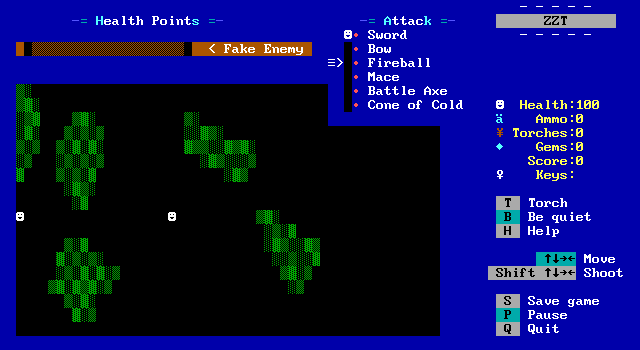
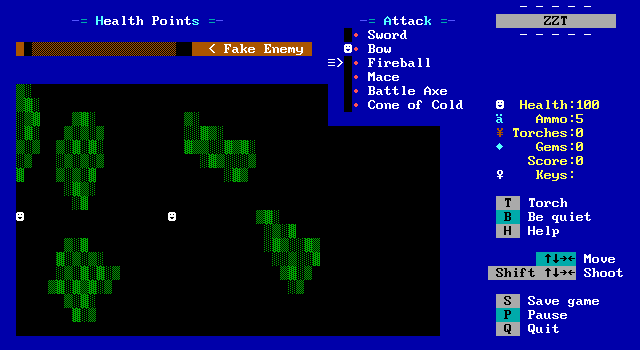
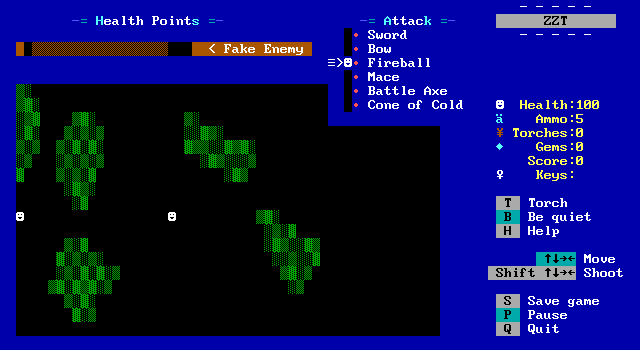
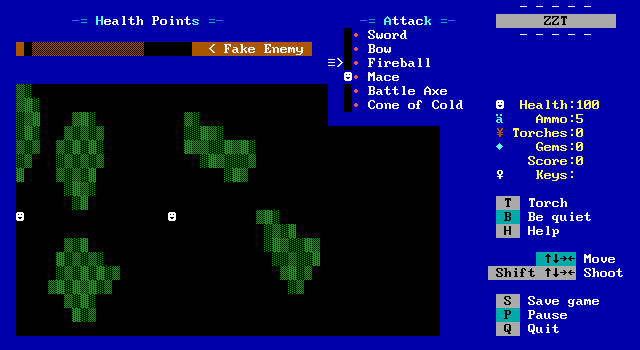

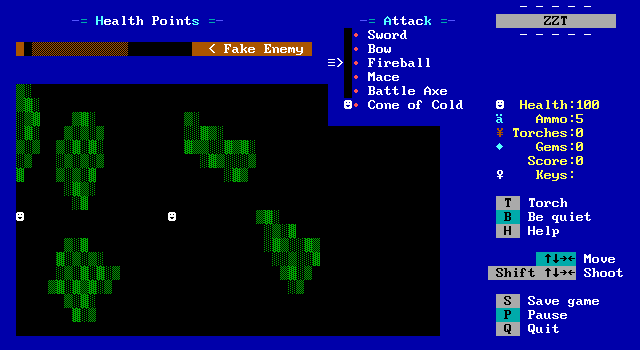
After you select which weapon to attack a cute little animation of a swinging sword or shooting arrow will play out and the enemy will be harmed before taking their own turn. In theory this is meant to be a simple back-and-forth fight with each player trading blows. In actual combat the player has their own health bar made of breakables like the enemy's. This means that there is no healing available during a fight, but it does mean your health will be full at the start of any combat.
The weapons, stats-wise, don't offer much variety. Sword, mace, and axe attacks do two damage. A bow does just one and requires one ammo to represent the arrow being fired (which comedically, the training room fails to provide). Both magic attacks do six. If this doesn't make any sense to you, that makes two of us. In the actual game, you're given a bow before you can get in any fights. A sword can be found early on, and the mace and axe can both be purchased from a shop. For magic, you start with the Fireball spell and eventually get Cone of Cold as part of the story.
So fights are just you casting your spells, then spamming any non-bow attack right?
Wrong. It may seem like that's the intended strategy based on the "turn based" comment in the explanation, but if you actually fight by taking your time to choose an attack you'll end up losing every fight. Enemies simply do more damage than the player, and health differences are generally negligible. What you need to do is turn ZZT's order of operations against itself.
Every attack plays an animation, tells the enemy's health to apply damage, and then tells the enemy to make an attack. However, nobody ever said the player had to wait for their first attack to finish before starting the next. In King's Quest ZZT you win fights by mashing on attack commands in hopes that enemy attacks are interrupted and discarded. Swing your sword and then immediately try to attack with your bow. The sword attack leads to the enemy taking a turn and #locking itself until their attack is finished. Then your bow attack kicks in, damages the enemy, and tells them to take their turn. Except they're still finishing up their previous attack which has them in a locked state so the message to jump to an attack label is discarded. Two attacks, and only one counter-attack.
This is how you have to approach every fight, and it's terrible. The precision required to beat this system mean you can't really even do so deliberately, and instead must rely on stumbling into victories by mashing attacks. The actual code is scattered across numerous objects so it's difficult to even say if this is the optimal strategy versus some kind of rhythm. Some attacks seem to be tied to animations while others fire damage and animations separately. The bow is notable in that its animation fires a bullet and relies on your foe being shot before damage is applied. It gets even more difficult when you realize that the sword and mace animations use the same objects so it might be possible to interrupt your own attacks as well. Good luck noticing that during all the frantic menuing, however.
The best I could come up with was to use my spells, and then just alternate between the mace and battle axe as bullets appear to damage the foe in hopes that my attacks were done and the enemy's were in a state that could be interrupted.
Perhaps the most absurd thing is that this engine does create an illusion of strategy. The idea that you need to mash attacks but the order of attacks means that going from sword to axe has a longer delay just because the player has to move from the top of the list of the bottom. If the axe and sword were next to each other on the list I'd argue that there's no real reason to buy a mace, yet because of the necessity of mashing the order of the list is actually a critical part of choosing how best to attack your foe.
Damage issues aside, the fights themselves aren't that impressive either. All of the fights boil down to doing the same thing, and none of the enemies differentiate from one another in fighting style. Attacks just get thrown out until somebody dies, with the deaths being un-commented on when the player is victorious. Every fight is simply a roadblock to get around.
I said I love this game right?
Family Feud
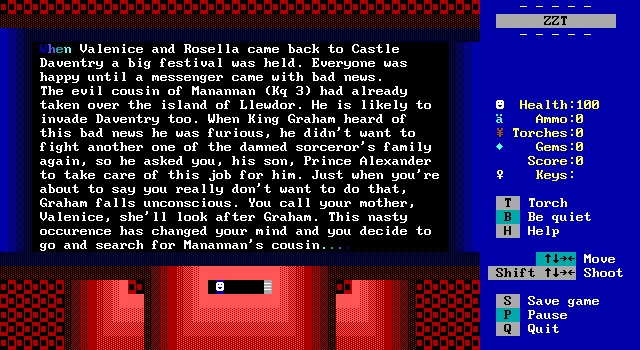
The actual game opens with this introductory text board set atop the trademark Interactive Fantasies Inverting Boulders Blend. As far as source inspirations go, this one is definitely most closely inspired by King's Quest III: To Heir Is Human. While this game explores more locations than Llewdor, it is the main region for the game, and the player takes on the role of Price Alexander, the same protagonist. After defeating Manannan, now it's time for his cousin Ravenlos to take back the region, and begin preparing an assault on Alexander's homeland of Daventry. Once again the two families clash with revenge being a core component of Ravenlos's motivations.
I love that King Graham doesn't want anything to do with this adventuring stuff anymore, and neither does Alexander until he feels pity for his father after seeing his weakened state. I think I always interpreted this as Ravenlos putting a spell on Graham in some way, but nothing of the sort ever goes stated, and Alexander's first quest is to just get some regular old medicine to help Graham. No hexes here, just Graham getting old I suppose.
The plot doesn't really develop that much throughout the game. Graham gets cured, and then Alexander sets off to deal with Ravenlos. He'll meet plenty of people on his journey, but doesn't really form any bonds with them. There are usually a small set of areas available to explore, though going out of order prevents Alexander from traveling beyond certain points. This can get pretty amusing when you do make a wrong turn and wind up in the village of the centaurs being asked to help deal with the ogres and just turning them down until you reach a point where Alexander needs to deal with the ogres for his own quest, and then is happy to help the centaurs with their troubles.
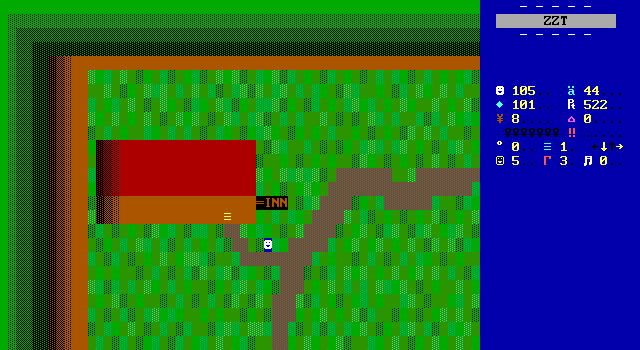
Along the way to Ravenlos, Alexander will explore deserts, the floating Uplands, return to Manannan's home from King's Quest III, visit the fairy kingdom, and generally just explore a wide world. As you might guess from the various creatures in the manual, there is some standard ZZT combat, with Alexander being given a bow and some arrows before leaving the starting castle and using the weapon to deal with creatures in traditional ZZT action boards. These are pretty light battles, with screens often just having three or so enemies in large open areas that could probably be avoided if you really wanted to. What really marks the milestones of progress in King's Quest ZZT are the RPG battles that happen at set moments, which are usually fairly obvious as the path will narrow and the only way forward will be past an object.
The previous overview of the RPG system and its numerous issues won't lead to you being caught in an unwinnable scenario at least. This is a 1997 ZZT game that doesn't use player clones to force the player to change boards (either via movement or by the "Koopo Method" of duplicating a passage onto a player clone). Instead you'll be told you're getting into a fight, a hidden passage will be revealed, and the player is asked to walk into it. You can just refuse and turn around until you're ready. One of the five fights is even optional entirely, only limiting the amount of gold Alexander will be able to collect if he doesn't actually fight his battles. When a fight is won, a flag is set and the object that initiated the fight will detect it and clear the way forward. To a modern audience, this is a pretty clunky way of handling getting the player to and from fights, making the seams incredibly visible. It does the job just fine though, and only isn't up to par if you hold the game to standards that didn't exist when it was new.
Visuals
The graphics in King's Quest ZZT are fairly mundane. Most boards are about as average as you can get for the era. STK colors are used throughout the entire game generally in very simple and repeatable patterns. Expect a lot of solid → normal → breakable → water → repeat. Even still, there are a few boards that are a bit more complex and memorable.
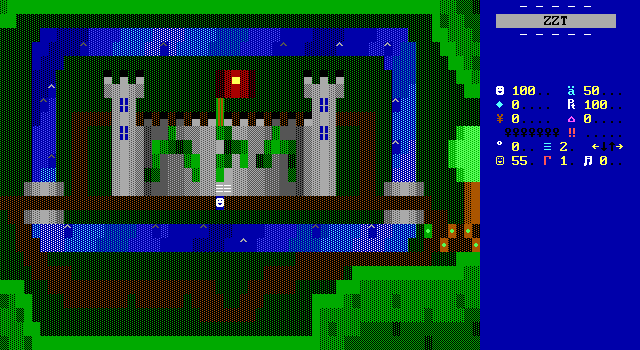
The Grahams' castle is a personal favorite. When you first step out of the castle and into the greater world to begin Alexander's quest to save his father and defeat Ravenlos, this is a great shot to begin on. The castle, which appears huge from the interior boards is now considerably smaller. All those boards fit in to that little space. There's whole world to explore.
And the moat has sharks! Every time you cross this board you better make sure to use the bridges over the board because otherwise you risk actually being attacked.
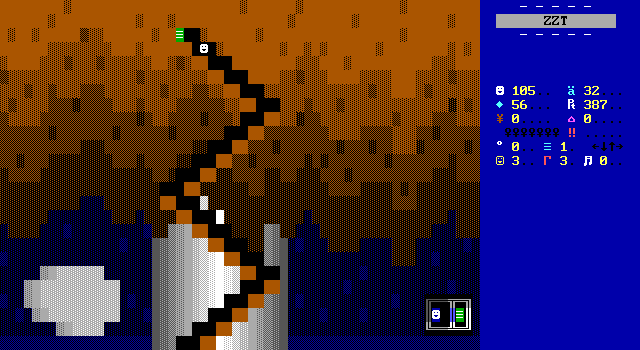
The cutscenes are where the game really shines. This climb of a tall tower to the floating Uplands may not look like much on its own, and the animation is just watching Alexander climb some stairs in silence, but the short wait the player is forced to endure by watching the scene hammers in the severity of the climb. If the player just entered a passage from the bottom of the tower and was warped to the top, the sense of height just wouldn't be communicated as it is here.
And, for those of you who have played Sierra adventures in their day, you're undoubtedly breathing a sigh of relief seeing that the game will climb the stairs safely for you.
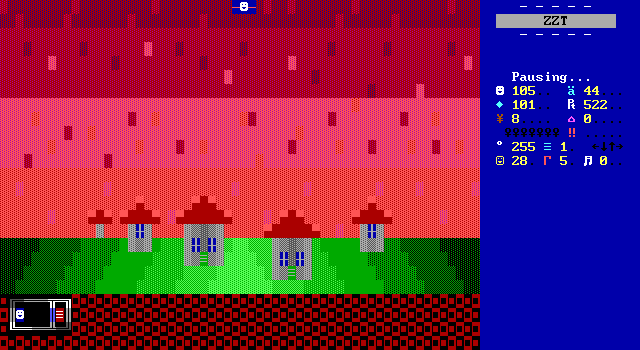
What comes up must come down in this next cutscene where Alexander returns to the surface using his newly acquired Icarus wings. This sunset breaks away from the usual fade as it requires itself to be made exclusively out of fake walls. Despite this, I think it looks more vibrant than the full blend. It's a very powerful red with a hint of purple in contrast to the blend that gives red and purple equal standing.
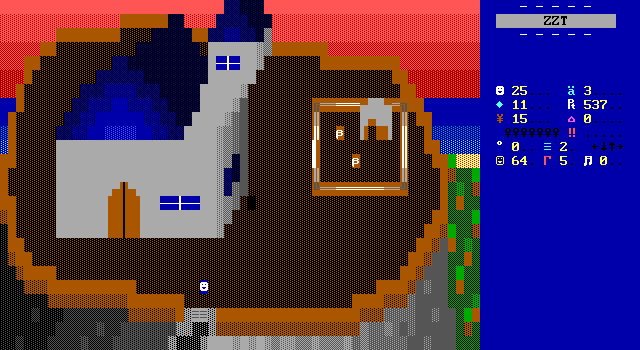
Manannan's home on this mountain overlooking the town in Llewdor makes for a nice conversion as well. I'm glad that the chicken coop made the cut. I'm less glad that those are chicken skeletons in the pen as once Alexander escaped and defeated Manannan in this take on the series, nobody bothered to free or feed the chickens. There's an empty spot where the player is located by default. Several boards suffer from this as Hydra and MeBo didn't bother to place the player on top of a fake wall to give the board full coverage. In a lot of my screenshots I tried to make sure to stand on them to keep them at their most photogenic.
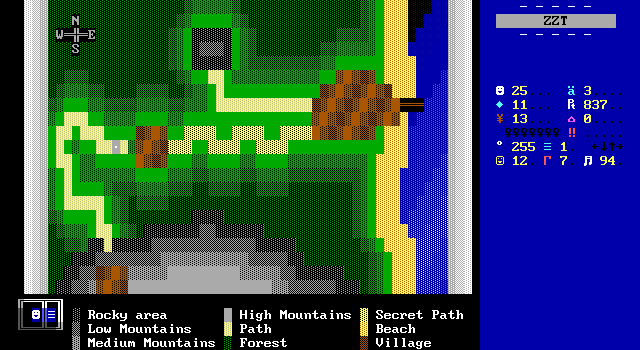
I also quite appreciate this map of the area surrounding Llewdor. The key and compass are absolutely what make this otherwise average board feel special. It's a bit of a shame that you don't see this until Alexander is trying to leave all the places shown on this map, but that does mean that you can put get a sense of how far and wide Alexander has journeyed to make it here.
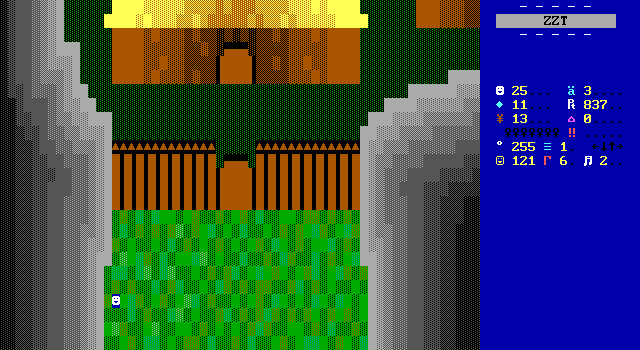
Honorable mention to this fence that protect the ogre village. I wouldn't have thought that the spiked tips and the timber itself would work so well together and not clash due to the differences in sizing.
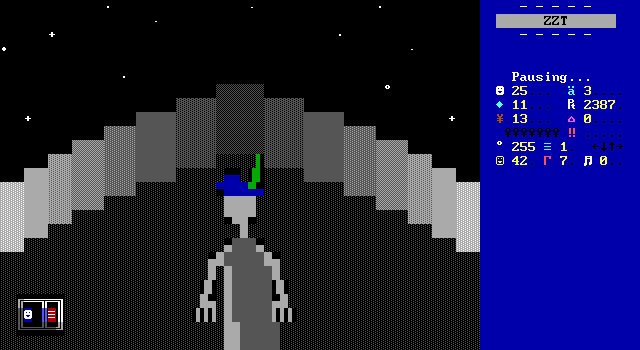
And lastly, another great job at doing so much with so little, is this late-game scene that takes us back to the starting castle to let the player see King Graham worrying for his son's safety, while looking up at the stars from the castle balcony. Graham's anxieties combined with the muted grays of the board really give a sense of disassociation as if Graham doesn't really feel all-there in his current state. At the same time, what little color is used here is used in order to portray Graham's iconic feathered cap. The fuzziness to what you're looking at becomes crystal clear as the scene plays out making it a surprisingly well designed scene that I think most other ZZTers wouldn't have thought to include.
Globetrotting
What gives King's Quest ZZT such a fun feel to it is the ever changing scenery. Unlike a more traditional adventure game, Alexander is on a very fixed path from Daventry to Ravenlos. You'll find yourself spending very little time in each area as there's generally not a whole to actually do in each segment. Yes, you can end up wasting time by missing an item here and there, but the slowed progress of such an event feels more like your mistake rather than Hydra and MeBo's.
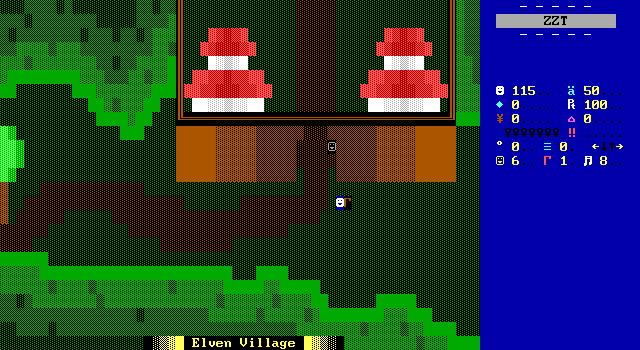
The game begins in the kingdom of Daventry, right next door to an Elven village that's unfortunately unable to be explored. Some early weaponry can be obtained by listening to a guard in Daventry castle who mentions a discarded sword in the desert. If prince Alexander doesn't mind the heat, scorpions (ruffians), and giant centipedes he'll find the sword in no time. Turning right around and proceeding through a forest until he reaches a massive tower that leads to the Uplands, a floating landmass among the clouds. There's no real sense of where you're actually trying to go at any point. Alexander just keeps on walking until he gets where he needs to be with very little fanfare to get the player curious about future locations. Generally by the time you learn of a new place to explore, you're just a board away from doing so.
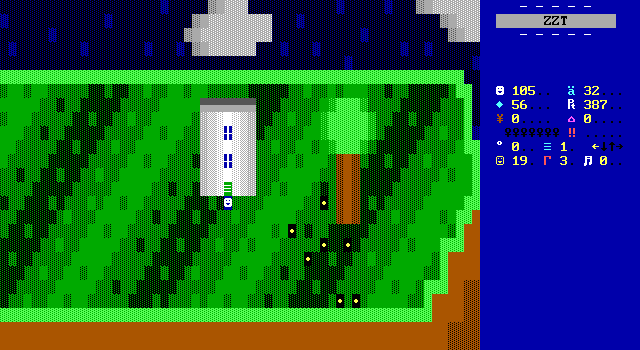
The Uplands are an underdeveloped part of the game. Finding the key to the tower and making the ascent feels like it should be a big deal which is something the use of a cutscene promotes. Still, upon reaching the top there's nothing but two boards of a grassy field, a lone tree, and the wings which are used to safely fly to the next pit-stop on the way to Ravenlos. It's just a little disappointing that such a potentially interesting location is devoid of life, whether that be friend or foe.
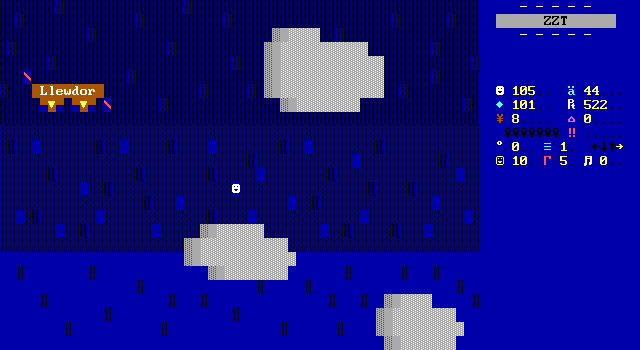
A winged sign amusingly flaps to keep itself aloft and let the very specific kinds of people who would grab some wings and leap off the Uplands. Carefully descending back to the surface bring Alexander to the kingdom of Llewdor and the town within. If you're playing this game with familiarity of the Sierra games, no doubt this is a fun throwback having Alexander return to the locations seen in King's Quest III. Even without that prior experience with the region, it's a welcome sight getting to land in the middle of a small town in contrast to being locked out of the gates of the previous village of elves.
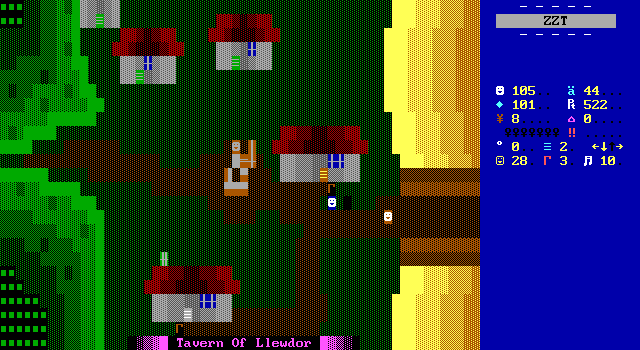
The excitement doesn't last too long unfortunately. The town is almost entirely decorative. A few homes that can't be entered, a tavern, and a shop. The tavern is closed, which really makes a game that's trying to be vast feel a little smaller. There are almost no townsfolk to speak with, and the only real puzzle is an optional one to acquire a fish to give to a cat in order to take the medallion around its neck. Even this is completely moot as all that happens is a flag is set that never gets checked anywhere. From the manual I suppose this was intended to be something sold for gold, but you'll never be given the opportunity (despite being able to sell weapons in the town's shop).
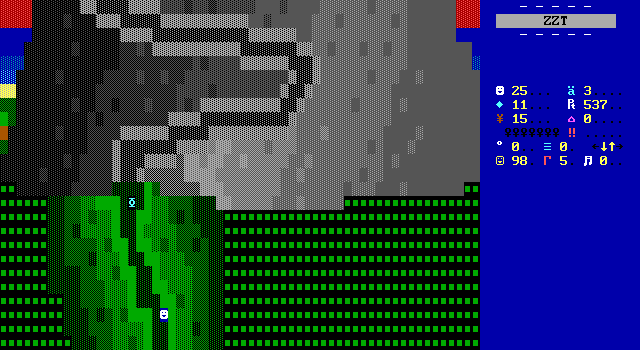
The homage at least does continue as venturing out of the main town leads up the mountain where Manannan kept Alexander as his servant for years. This location is lovingly depicted, and from what I know of KQ3 is probably its most memorable location. Hydra and MeBo even go so far as to line the path up the mountain with objects that instantly kill you for falling off the path. This is certainly true to the original, and in ZZT isn't a big deal whatsoever as the deadly tiles are made readily apparent and the grid based movement makes it far easier to navigate a twisty path than the AGI engine.
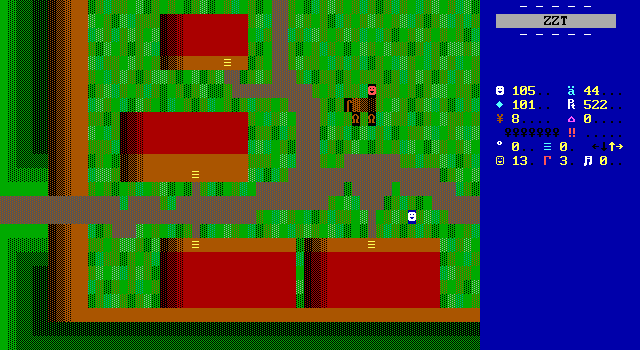
Alexander doing his due diligence in town will also reveal a suspicious looking bush covering a secret path. This leads to another village, this time one belong to the centaurs. They are in hiding as their race is regularly hunted by ogres in the area and they fear the ogres will find them soon enough. There's a rear exit from the village which can't actually be taken immediately. Hydra and MeBo, unable to come up with a reason, opt instead to just place some invisible objects to display a "You can't go this way yet." message when touched. Eventually once Alexander has finished doing everything in the Llewdor area that he can he can finally head down this new road.
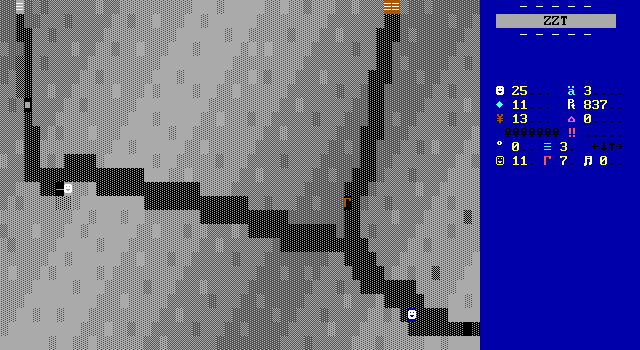
Next on the prince's quest is a journey over a mountain range to obtain a spell of teleportation that Ravenlos had intended to be collected by his cousin Manannan. If Alexander isn't careful here, he may run into a massive red dragon. You do not want to run into this dragon.
What you will want to run into is Jerrod Wilson! A name and character I was unfamiliar with until the dialog helpfully explained that he was in the wrong game, appearing in King's Quest ZZT rather than Gold Rush!, another one of Sierra's adventure games.
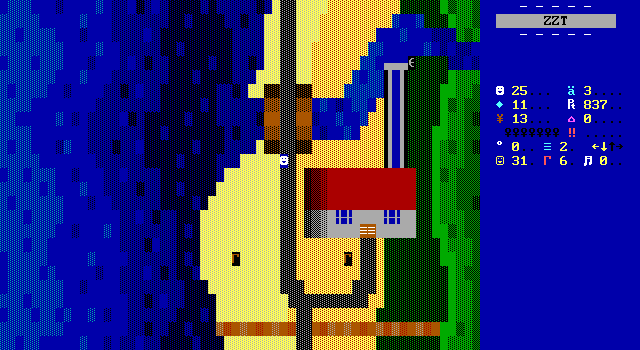
With the power of teleportation, Alexander's journey rapidly draws to a close as he whisks himself away to the island of Tamir, another location being re-visited for this ZZT game, this time from King's Quest IV: The Perils of Rosella. Players of the third King's Quest can enjoy revisting Llewdor as it gets a good bit of focus and feels like the primary region the game takes in place in. Tamir fans from the fourth in the series will be disappointed as Tamir amounts to just two overworld boards and one interior scene. This isn't 100% true as Alexander can also take a hilariously long swim across two boards worth of ocean to reach Fairy Island. Fairy Island is even weirder as it's three exterior boards and the inside of a castle, but there's nothing to actually do on any of those island boards. It feels like the attention would've better been spent in Tamir.
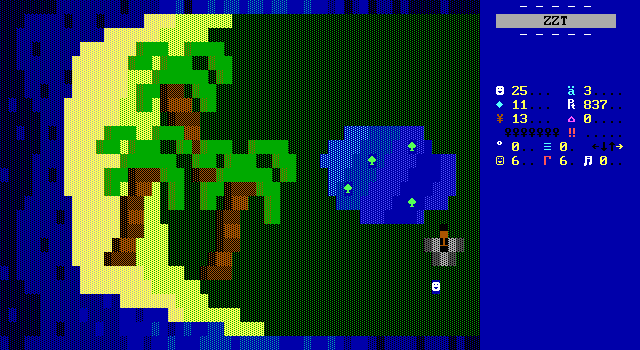
Regardless of Alexander's prospencity to take long walks via land, air, or sea, the actual work to be done in Tamir is as simple as finding a way to defeat Ravenlos's soldiers without fighting them directly, and then step up to Ravenlos himself. The purpose of the Fairy Island is solely to get Alexander back to Daventry which leads to a very anticlimactic finish where Ravenlos is defeated and nothing happens other than a flag being quietly set.
The Quests of Kings... Princes
Perhaps where Hydra and MeBo break away from the roots of the series is in the actual challenges Alexander has to overcome. While there is the occasional item to collect at no point does the game feel at all like an adventure title, Sierra-style or otherwise. Most items are simply found lying around, with hardly an inventory-based puzzle in sight. Of course, given the reputation the King's Quest franchise has these days, for most players that's probably a welcome change. Still, it makes the gameplay not really what one might imagine from a ZZT conversion of the series. This is a good time to bring up Nadir's conversions of various Codemasters Dizzy games. With the ZZT Dizzy Games Nadir basically goes for a direct port of all the puzzles in the game, instead discarding the platforming to make the transition to ZZT. Being able to keep so many puzzles fully intact may stem from the fact that the original Dizzy games involve swapping items the egg actually carries around as needed. With ZZT's limit of ten flags to track items, it works out nicely with Dizzy's own limited inventory for the conversion. King's Quest goes for the bag of holding approach where Alexander, Graham, or whichever other protagonist is off saving the kingdom will routinely line their pockets with anything they can grab. Combine this with the notoriety of the series for situations where you missed an item at the start of the game needed closer to the end, and it's probably for the best that Hydra and MeBo focused their flag usage on tracking equipment for RPG battles and quests Alexander has undertaken.
With that in mind, I don't think you could properly convert any King's Quest to ZZT reasonably intact, though perhaps some of the earliest titles which I know little about the intricacies of might be a bit more feasible. For this ZZT game, Hydra and MeBo seem clearly more interested in creating new content for an original title in contrast to Nadir opting to spread the Dizzy games to a new audience by porting them rather than unofficially expanding the series. Seeing as how it's Hydra and MeBo's original creation, that means things are going to cater to what they enjoy about the series rather than being completely faithful, which I think is why I was so enamored with it as a child. Puzzles are what stop a player from continuing their adventure. Removing them lets Hydra and MeBo instead work on creating interesting locations to explore, and get in on this newfangled "RPG combat" thing that's taking off in the ZZT community.
Still, Alexander has to do something more than just walk to Ravenlos, fireballing anybody he meets along the way. The duo responsible for this game do a pretty solid job at the start of the game, loading up Alexander on things to do early, and thus offering a lot of hooks to get the player invested in exploring Daventry. Alexander will have two things to keep his eyes open for before he even leaves the starting castle, and from there he's one board away from another quest.
Saving King Graham
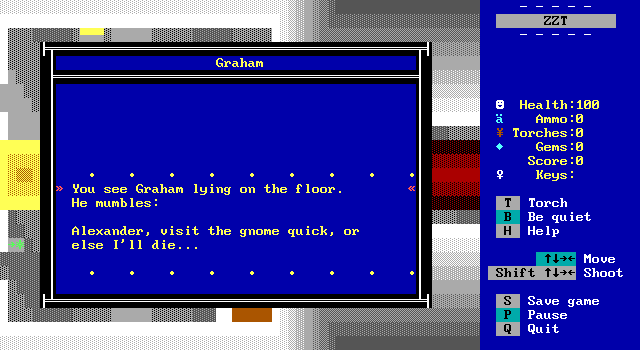
Obviously the most pressing issue. Graham is weakened and needs medicine. There's no foul play implied here, so I suppose Graham is just getting old. Alexander needs to find a gnome's cottage in the forest near Daventry castle in order to get some medicine. This also requires that you provide some kind of proof that Alexander really is royalty. This would be a reasonable first puzzle, but Hydra and MeBo instead force the player into having the solution from the start. Alexander's mother Valanice doesn't just tell her son about the gnome, but thoughtfully give him Graham's adventuring cap to provide the necessary proof.
After collecting the medicine and heading back to the castle Graham is restored to good health, and Alexander can get to work on his real quest to defeat Ravenlos.
Free Sword
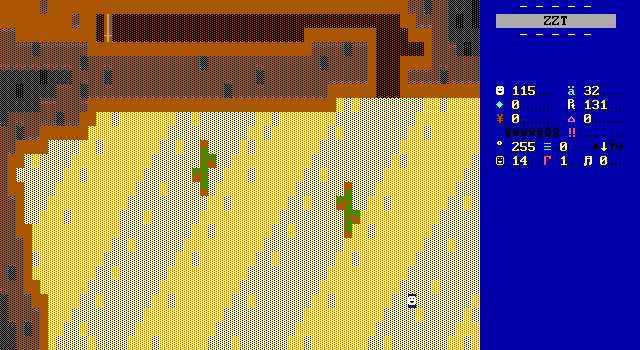
The second quest before leaving the castle is to acquire a sword. This one is actually fully optional. The sword is only used in combat, and you'll actually be able to purchase other weapons which work just the same before you have your first RPG battle. Still, you wouldn't actually know this, so when a guard mentions an abandoned sword in the desert to the east, it immediately seems like something immensely important.
The desert is just a few boards which Alexander hugs the border of, rather than venturing deeper inside of it and risking getting lost and/or dying of thirst. A few centipedes and scorpions are encountered along the way in an attempt to provide a little challenge. Given the emptiness of the desert and the reasonable supply of arrows Alexander begins with it won't take long to get through and claim a new weapon.
Ansil And The Golden Candlestick
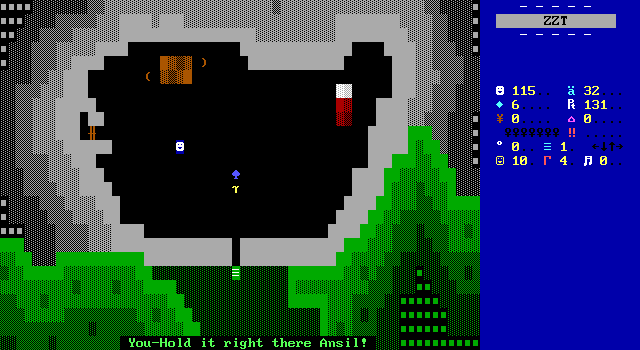
Between Daventry castle and the desert is a village of elves. The one guarding the gate is friendly with Alexander and mentions how recently a halfling thief by the name of Ansil stole a valuable golden candlestick. He asks Alexander to keep a look out for the thief and Alexander is happy to oblige. Like the sword and the medicine, this quest is over almost as quickly as it begins. Ansil's hideout is very poorly hidden from the player, with a single object blocking a visible passage two boards west of the town gates. Upon discovering the hideout Alexander raids the place, taking scattered gold coins for himself and pocketing a silver key from a chest that unlocks the tower to the Uplands. Before he can leave however, Ansil returns with the candlestick in his possession. All signs point to this being the first proper fight, but Ansil immediately runs off to avoid capture, abandoning the candlestick and any other ill-gotten loot, which is now Alexander's loot.
As a reward for returning the candle Alexander receives plenty of arrows. Were it not for the key this would also be technically optional.
Afterwards, Alexander's quest is just a matter of making progress on the way to Ravenlos for quite some time, with everything past the gnome's cottage all the way through the Llewdor town section of the game being devoid of things to do other than finding more keys to access more places.
The Minotaurs Vs. The Ogres
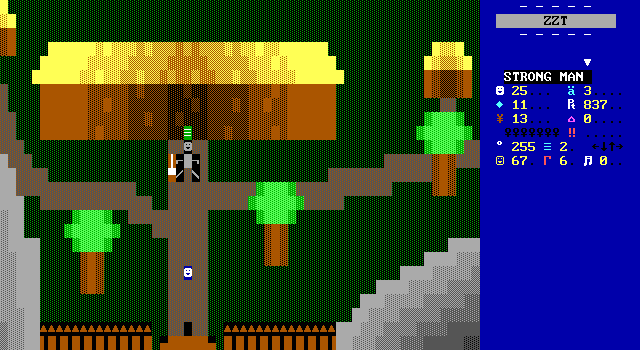
It's not until Alexander needs to make his way through the centaur and ogre villages that he'll run into somebody in need of something. The centaur's leader wants Alexander's help in defeating the ogres that have been hunting them. Alexander only accepts the request once he also needs to beat up some ogres which really makes him seem a lot less heroic than he's intended to be. This still isn't really a proper quest with Alexander just needing to agree to help for the game to let him proceed. While he does fight a single ogre he never returns to the centaurs to be rewarded (assuming killing one ogre somehow solves the problem of the centaurs being hunted).
Alexander Poisons The Water Supply
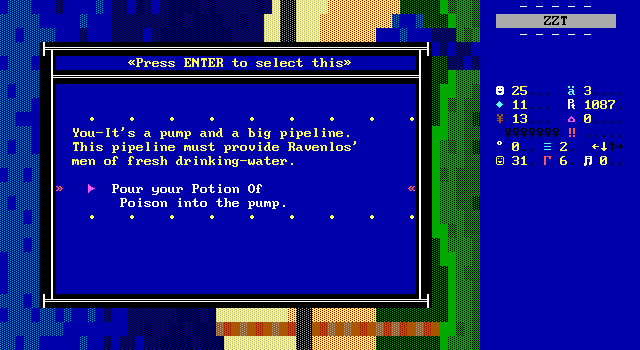
In Tamir, Alexander's final quest is to defeat Ravenlos's soldiers so he can take on Ravenlos directly. Luckily for him they're all hanging out in some barracks that draws in water from a nearby river. A creepy dude in Llewdor offers Alexander to trade his Icarus Wings that he used to fly from the Uplands to Llewdor for a vial of a deadly poison.
Once Alexander pours the poison into the barrack's water supply, the soldiers just so happen to all get thirsty and drink the now tainted water, collapsing to the ground dead on the very next board. Alexander won't actually proceed without pulling off the poison trick denying us of a potentially amazing death sequence in which he's defeated by a dozen soldiers.
Fairy Island
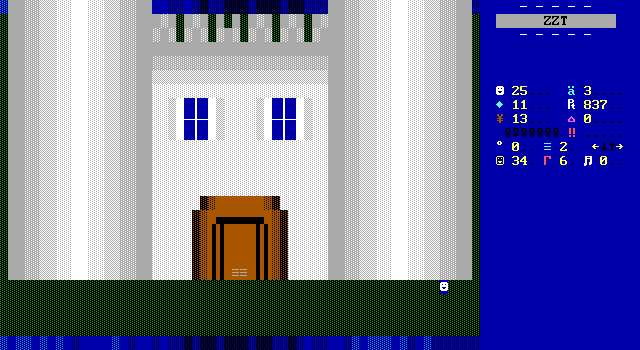
Finally, Alexander gets to fight Ravenlos and then swim over to Fairy Island where a fairy will return him to Daventry.
Really the quest structure the game introduces early on is pretty quickly discarded. It had been long enough since I last played this (I know I streamed it years ago, though it was early enough that the stream wasn't uploaded anywhere) that I was hoping for the format to continue, with the town in Llewdor giving Alexander a new group of tasks to complete before progressing through the centaur village and to Tamir. What you actually get is just a lot of wandering around with the only real sense of progress coming from counting each board you visit rather than something tangible happening in the game's world. It makes things feel a little unfocused as there's rarely a reason why Alexander goes anywhere in particular. This is something that happens a lot with these earlier Interactive Fantasies titles which really focus on creating interesting places and coming up with fun little items and character designs without any sense that there's a plan for everything included.
It's A Big World After All

Even if the journey feels aimless, Hydra and MeBo should be complimented on how well they managed to give King's Quest ZZT a vast sense of scale. I often find myself commenting on locations that are far bigger than they need to be, but there's enough of a sense of wonder and exoticism to the fantasy world on show here that I'm much more on board for it here.
One technique employed by Hydra and MeBo is extra long transitional boards. This happens right from the start where the castle feels large not because there's actually a lot contained within it, but simply because there are extra boards that just pad out the walking a bit. The bulk of Daventry castle is three boards arranged in a right angle with the actual bend having nothing on it other than some decorative shields. What it accomplishes by doing this though, is giving a sense of scale to the world. The extra bend only adds a few more seconds of travel, but it does add multiple board transitions. So while it doesn't take too long to get from the throne room to the front door, it does feel like you're in a huge castle.
Plus, there's a fourth balcony board that only offers a message about not having time to appreciate the view. At first this seems like a board that could have been removed completely, until you see Graham standing on it in the ending. By taking the time to let the player come here, even if there's nothing for them, Hydra and MeBo strongly communicate that this is a castle that is being lived in, and not just the backdrop of a stage play.
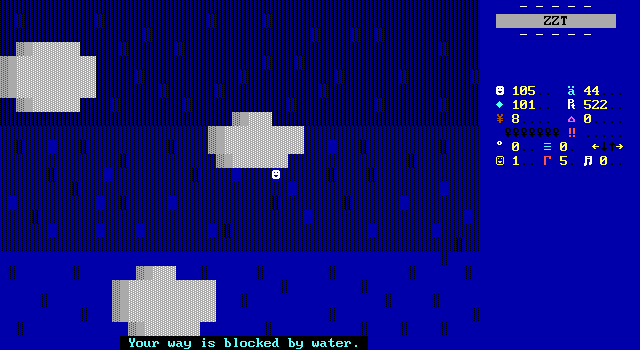
The use of longer than average walks continues throughout the game. Traveling from the Uplands down to Llewdor via the Icarus wings could have been as simple as collecting the wings and going directly to the cutscene. Instead, the player gets to enjoy the sense of free-flying by crossing two boards of blue skies and clouds. It's harmless fun that doesn't actually require anything other than holding left and then down, but it's inclusion adds so much charm. Plus the sign for Llewdor shown earlier is great and wouldn't get to exist otherwise.

A third instance occurs on the walk down the secret path to the centaur village. Here though the technique stumbles, and in doing so gives us some insight as to why it worked previously, and why it rarely works in other ZZT games.
The first mistake in the layout. Every successful instance of the technique throughout the game lets the player move in a straightforward manner. Here the path bends ever so slightly, and because it's so slight, it's a nuisance to have to do so just to end up on nearly the same row you started on. With the right angle bend you can see how guiding the player in a new direction is perfectly fine, but here it just interrupts the flow of things.
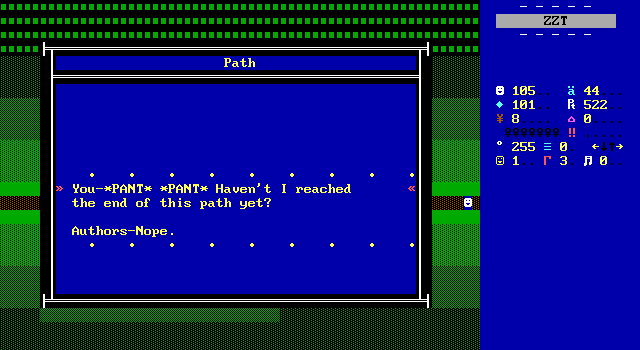
Secondly, it breaks the fourth wall. I don't inherently object to the idea, and it's not like the attempted humor is out of place in a King's Quest fanwork, but specifically it does so by having Alexander complain about the length of the path. By calling attention to it, suddenly the player is acutely aware of the fact that they're running across some nigh-identical boards. There's nothing here on these boards to draw the player's eye to, just a green fade, a brown path, and some boulders for a background. You might not even be a fan of the other instances of extra long paths throughout the game, but they have the benefit of clearly trying to give the player something to look at at least. Here it comes off as a joke at the player's expense.
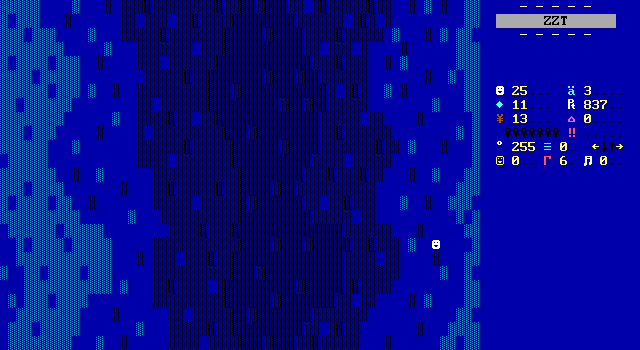
The final instance is the path to Fairy Island, which is great because of the mental image of Alexander just swimming and swimming until he makes it to his destination. Fairy Island is also unique in that the technique kind of continues beyond the destination as there's a bonus board at the end that is purely decorative for players willing to keep exploring the island and not immediately head into the giant castle on it. Again, there's a return to just moving in one direction from start to finish, and the goofy mental image makes the inclusion endearing and welcome.
I'm really impressed at how this scaling managed to get around my usual scorn at this sort of thing. It didn't in every instance, as the centaur village is four boards with two buildings to enter and two centaurs outside to talk to, so there's definitely some nuance involved to do this sort of light up-scaling effectively (at least, specifically to target my enjoyment of it.) It's definitely opening my mind a little to how this can be done well, or at least making me more acutely aware of why I usually dislike it so much. Kudos to Hydra and MeBo for showing me another technique in the ZZT tool box.
The Death Reel
Sierra adventures and ZZT are both infamous for the ways in which they let the player be killed. Hydra and MeBo definitely deliver on this front, and luckily aside from the rough RPG battles, the deaths are pretty easy to avoid. Nevertheless, I had to make sure I saw them all as I feel like they're an important part of the Sierra adventure game experience.
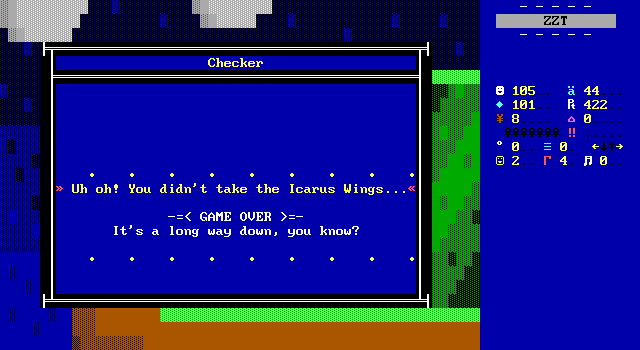
From the Uplands a sign points down to Llewdor. You might want to grab the Icarus wings first though.
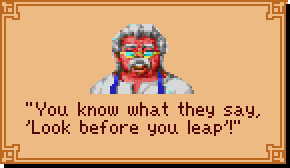
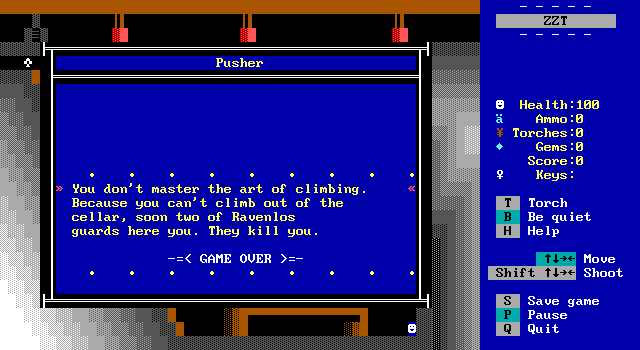
Alexander can practice his climbing on a large tree with a rope attached near Daventry castle. If you don't, you can't make it back up from the drop into Manannan's basement.
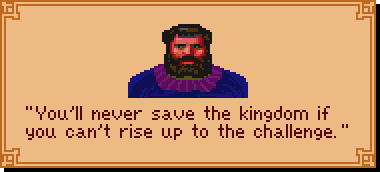
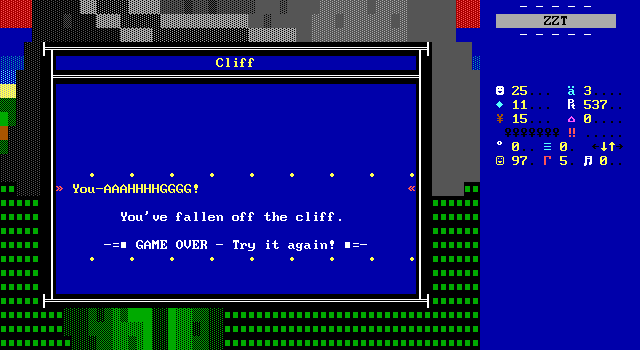
ZZT luckily makes climbing these precarious stairs a breeze if you take your time. If you misstep though...
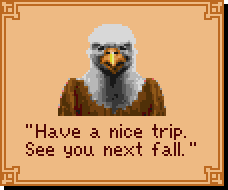
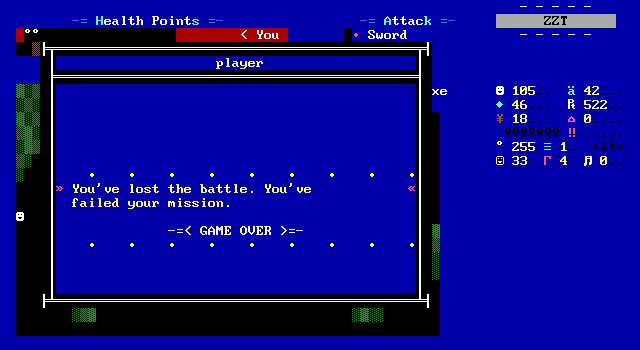
The warlock can overpower Alexander with the spell of Dazzle and the dreaded "Melf's Acid Arrow"
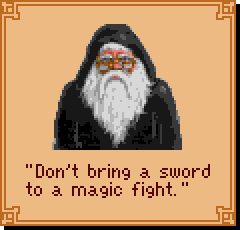
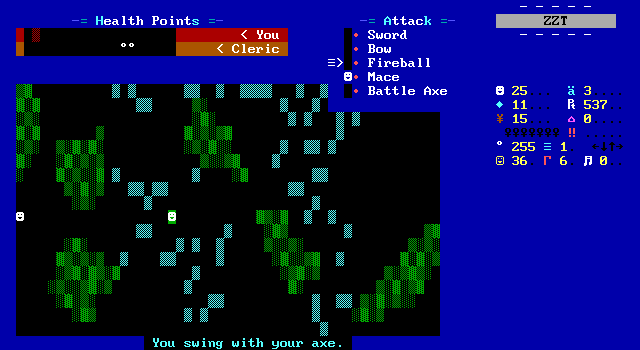
This cleric of Ravenlos knows how to fire a bow and cast "Cause Light Wounds". (Every RPG battle death uses the same mission failed text.)
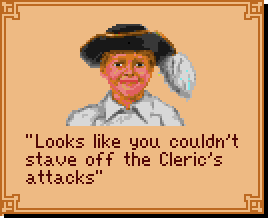
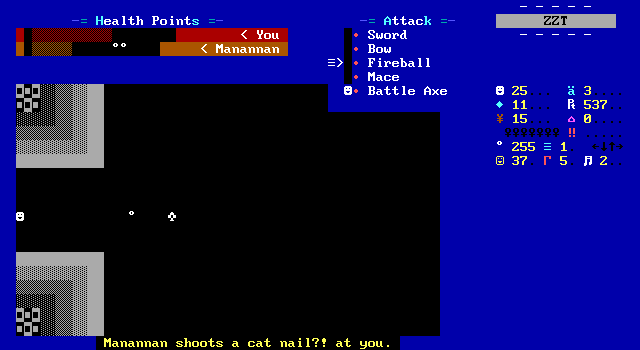
Manannan can still put up a fight, even after being transformed into a cat. Watch out for "cat nails".
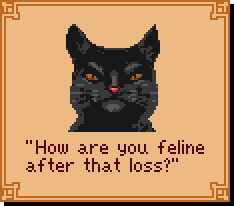
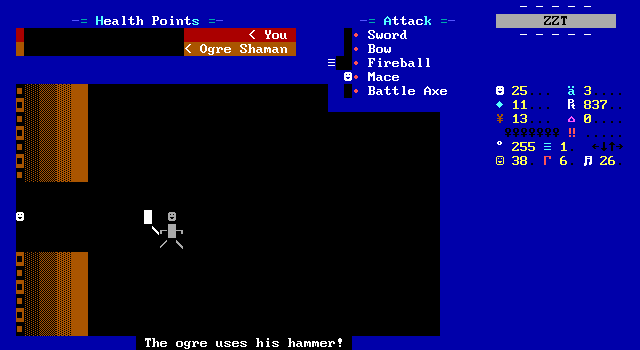
The Ogre Shaman can cast "Heat" or just pound on Alexander with a very large hammer.
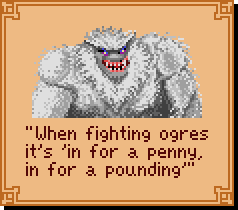
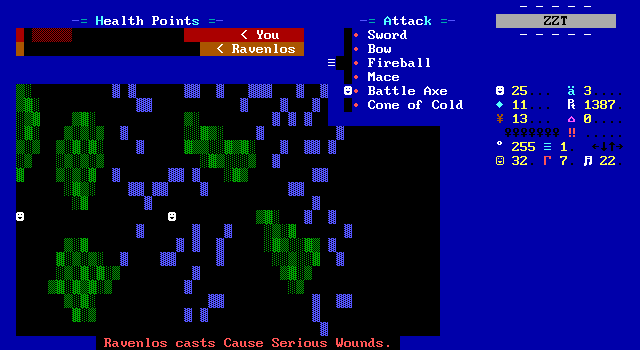
Ravenlos is the final foe of course. He's got a Fireball attack of his own and "Cause Serious Wounds".
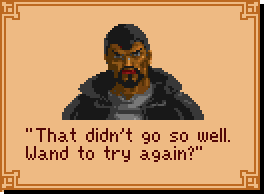

Getting into the ogre village means getting past the door. Knocking is not advised.
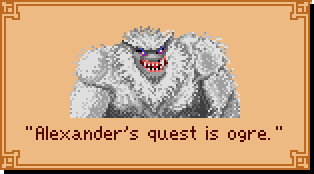
Lastly, is this incredible dragon that cannot be fought. Ignore the warning sign at your own peril. Or do, because the effort put into this cutscene is much higher than the other grisly ends for Alexander.
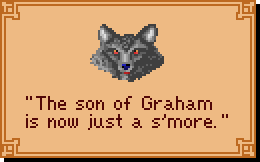
Final Thoughts
Overall, I'm still impressed and still very much a fan of this light-action RPG interpretation of King's Quest. Hydra and MeBo took a contentious game, albeit one probably more well regarded overall back when this was being made, and managed to create something original enough that newcomers can jump right in without issue. Even with their own creative interpretations of the King's Quest formula, there are still enough clear connections to the source for fans to get some extra appreciation out of it. This ZZT interpretation of Daventry and its surroundings map well to ZZT, letting the player explore a wide variety of areas, really imbuing the game with the sense that you, the player, are on a Graham grand adventure.
The game is full of charm, conveyed mostly through its visuals, with the chunky centaurs combining a smiley face with a horse body stealing the show in that regard. The stick-limbed ogres do a great job as well. What I would have wanted more of out of this game is a focus on the more fantastic creatures the populate the world. With the large scale of the game there comes a sense that the world is very sparsely populated. Alexander rarely gets an opportunity to speak with anybody who doesn't want him dead or want to sell him something, putting the game in stark contrast to other games with similar settings such as Sivion or Ned the Knight. These games do a nicer job of filling their worlds with a variety of characters. The world of King's Quest ZZT is also sparse in terms of action. Only a handful of boards give the player an opportunity to shoot off a volley of arrows which is rather surprising as this game does hail from an era where you could still find some success in that being the only type of combat in the game. The good news is of course that it makes getting around the world rather easy, but with the puzzle aspect of the series casually discarded, not having the action rise up to replace it doesn't do the game any favors.
This leads in to what King's Quest ZZT does do, which is RPG battles. These are bad. While I'm sure a young me loved mashing buttons and watching animations misfire until Alexander ended up victorious, today I can't get behind it. ZZT RPG engines are typically intended to be the highlight of the game they're contained within, and rarely do they hold up. However, even going in expecting it to not be anything spectacular, I was left very disappointed here. Not only is the battle system a broken mess, but the fights have no weight to them. Because of the difficulties of coding character growth (as in stats and equipment, not growth emotionally) in ZZT, these fights are mostly used for significant fights, less random encounters and more boss battles. Hydra and MeBo included five fights in the game, three of which feel like they're just there to be a roadblock. You don't know anything about the warlock, cleric, or ogre that you fight beyond them being in your way and fans of Ravenlos. The other battles with Manannan and Ravenlos feel more significant since you'll have some idea who these people (read: person and a cat) actually are, but the lack of reactions from Alexander make them no different than than any other foe Alexander beats down. Like, the basic story of King's Quest III is that Alexander was enslaved by Manannan, transformed him into a cat via his own spellbook, and then these two meet again without even the slightest acknowledgment of their past.
Despite these issues, I still feel like King's Quest ZZT is a fun and worthwhile experience. Its frustrating fights don't put on a good enough face that I'd recommend it for a newcomer to ZZT per se, but once you're comfortable with what ZZT worlds have to offer it's something that can be appreciated. If you're looking into more historical titles, King's Quest ZZT is a solid representation of what ZZT games were like during this transitional time period for the medium. It's a game that demonstrates how built-in creatures were becoming endangered as impressive coding became king, and as such the game has a sort of hybrid design here that mixes the old and new, (or today the really old and the not as old). King's Quest ZZT is an early and formative work whose style would carry on throughout the numerous fantasy themed ZZT worlds the members of Interactive Fantasies would go on to create. Games like this and Quest for the Immortals are the origins of more complex and original works like Deceiving Guidance. It's a game that I will always care for despite its problems, and one that I hope others can still see some of that charm in to appreciate themselves as well.
Special Thanks to @Foone for The Death Generator used for the death reel section of this article.



The gnome with the medicine to save Graham asks who you are. You can tell the truth, or you can say you're a soldier of Ravenlos.